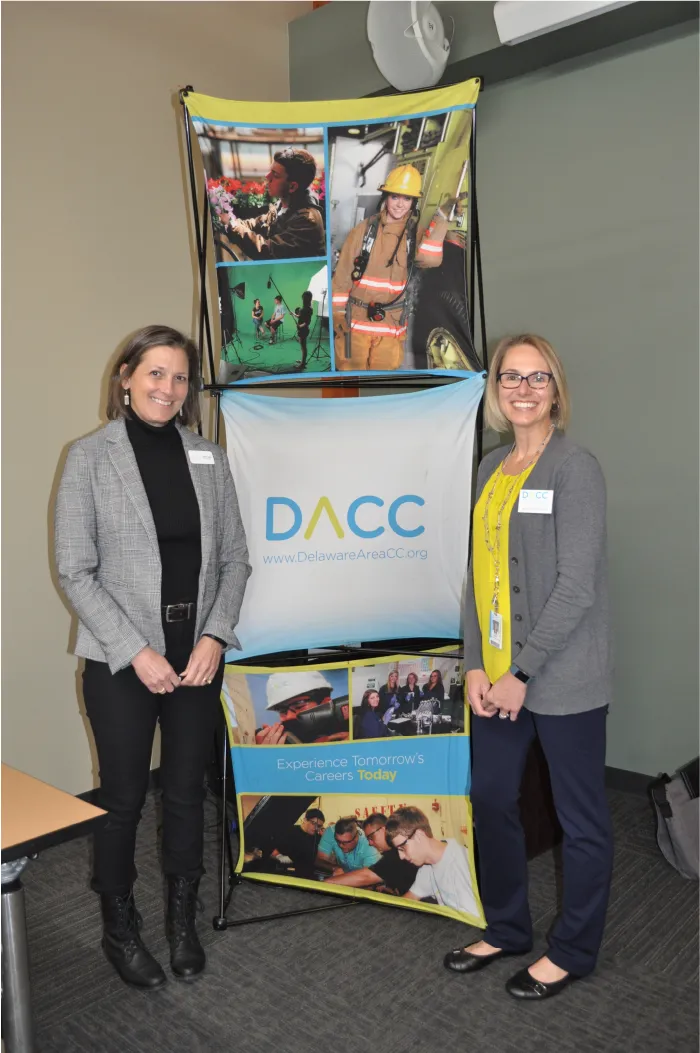Enrollment Marketing: Advocacy
Advocacy plays a major role in restarting the customer journey to school enrollment. Here are some ways to get your families talking.

Originally published as "The Customer Journey: Advocacy" in the Winter 2024 issue of SchoolCEO Magazine.
Bringing families to the final stage of the customer journey is a big deal. You and your team have spent countless hours and days supporting new enrollees—and your schools are better off because of it. Hopefully you’ve been able to celebrate growing your school community and your district’s impact, but you know all too well that the work isn’t over. As your community’s needs change, so will your methods for connecting with and guiding new families into your district.
Fortunately, you’ve already done the hard part—you’ve earned your families’ trust and confidence in your schools. Now it’s time to tap into the power of their influence in your community. Advocates are often the spark that kick-starts the school enrollment customer journey all over again. They are neighbors talking to neighbors, friends chatting over coffee, a proud dad bragging about his child’s success in your schools.
When people are excited to be a part of your school community, they will share that enthusiasm—but you’ve got to help them along the way. So the most important question to ask in the Advocacy phase is:
How can you empower your advocates to use their voices and influence to tell your district’s story?
Create welcoming opportunities to inform and engage.
If you want your advocates telling your story, you’ve got to make sure they know what’s going on in your schools. In a moment when trust in institutions is at an all-time low, it’s vital that your advocates know all they can about how your schools work and what you can offer your community’s students.
For Delaware Area Career Center (DACC), tapping into advocacy has helped clear up a long-standing misconception about the school. The CTE high school, which serves six districts in and around Ohio’s Delaware County, offers a wide range of career exploration programs for the area’s diverse array of students. But like many CTE schools, most of the community thought DACC’s programs were only for students not planning to pursue post-secondary education. Many parents in the area weren’t aware of all the immersive opportunities and hands-on experiences the school could provide—regardless of a student’s career trajectory.
But after being contacted by Beth Probst—a parent who also happened to counsel students on college and career readiness—DACC staff devised a plan to encourage a new narrative in the community. Having held her own misconceptions for so long, Probst advised DACC to talk to families and find out what would resonate with them. So the career center held a small coffee chat in her living room with about five of her neighbors and a couple of staff members from the school. The chat was a huge success, allowing the DACC team to correct misperceptions and earn trust. With a neighbor present, guests knew they weren’t being sold to or manipulated—and they were excited to learn and share more about the school.
Having this conversation was also quite enlightening for the DACC communications team. They realized they weren’t using the right language to explain what their school actually does. “When I used the word elective, a lightbulb went off with the parents I was talking to,” says Alicia Mowry, DACC’s communications director. “It’s a term they’re familiar with, and we were able to use that common ground as a platform to talk about how our programs are electives, but also so much more. So we decided to start calling ourselves a superelective school.”
This insight, learned through a small, intimate coffee chat, would be a game changer for DACC. “No matter what a school puts in front of you, no matter how many times they email you or put a message on social media, it really comes down to neighbors talking to neighbors,” Mowry says.
With that in mind, she’s helped evolve DACC’s coffee chats into regular and reliable opportunities for promoting advocacy and sharing the school’s story. Now held four times a year, these events are successful in part because they’re small and personal. Despite no longer hosting the chats, Probst still attends each meet-up, whether it’s at a library or a local coffee shop. “Even if attendees don’t know who she is, she’s not a staff member, so they trust her automatically because she gains nothing from saying positive things about us,” Mowry says. “She always starts the conversation about all the options for high school students—from AP classes to college credit plus classes—and then she introduces DACC as another one of their options and hands it over to me.”
Mowry customizes each meet-up based on what the attendees are interested in discussing or learning. And because community members have to register for each event, DACC is also able to keep them engaged and informed online. “Once they register, we have their email addresses, and after every event we immediately launch a three-part email series to them,” she says. Attendees also get DACC’s monthly Explorer Newsletter, which tells them about upcoming events and encourages them to share the information with neighbors and friends.
“It’s an ongoing social experiment,” Mowry says. “But for me, success is seeing how excited they are, seeing our community support the career center because they understand how important career tech is for anybody.”

Connect advocates with prospective families.
Following the pandemic shutdown, Salina Public Schools in Kansas wanted to reconnect with families in the community and help them through their journey back to school. This led to the creation of Salina’s Family Rep program—an initiative that connects the district’s existing advocate families with prospective families. Through this network, anyone considering enrolling their kids in Salina’s schools can hear all about them directly from a family who already has kids in the district.
The way it works is simple but powerful: Each principal identifies one or two families who are enthusiastic supporters of their school and asks to share their contact information with interested families. “Their goal is to just talk from the perspective of being a family involved in that particular school,” says Jennifer Camien, the district’s communications director. “Those over-the-backyard-fence conversations are where decisions are made and impressions are formed.”
The district also sends each family rep what they call ambassador emails. “These emails are strategically and intentionally crafted about once a month and tie back in with some of our key messaging,” Camien explains. “This basically gives people some good information about our district, already packaged up with a bow on top.” These are also sent out to key contacts who aren’t family reps but are advocates or supporters of the district.
To promote inclusivity in their program and schools, Salina encourages principals to recruit at least one Spanish-speaking family per site to be family reps, especially where there are higher numbers of Spanish-speaking students. “These new families are hearing from trusted sources, people they can identify with and relate to,” says Camien.
Although the program has been a success, the district plans to adjust it slightly. Now they’ll have principals ask prospective families if they mind being contacted by a family rep. “We’re reversing it,” Camien says. “Instead of a prospective family having to take the action, our family reps—who are very enthusiastic about their roles—will now be the ones doing the outreach. That’s going to level up our game.”
At any given time, the plan is to have at least 12 family reps—one from each school. But Camien believes that as the program moves into its second year, many of their current family reps will want to continue advocating for the district. “This entire program is self-sustaining,” she says. “We did a basic launch, but we can sustain it now because it’s kind of fluid. It can grow with us.”
Engage local leaders.
Finding and connecting with influential members of your local community is a great way to build advocacy, especially if they’re already supporters of your schools. But how can you make sure this group is actively involved in sharing your best stories? Well, leaders want to lead, so it’s about empowering them to tap into their own influence. You do this by keeping them engaged and informed about the inner workings of your schools and the role they can play in helping your district thrive.
For a great example of this, let’s visit Wisconsin’s Howard-Suamico School District (HSSD). A couple of years ago, they created Leadership HSSD, an annual program that invites 40 leaders from the community to monthly information sessions related to public schools and the district’s work.
The program is co-sponsored by the Howard-Suamico Education Foundation (HSEF), whose president, Brian Stuelpner, serves as co-chair. Stuelpner, a local business leader and parent of four kids in the district, was a part of HSSD’s referendum task force in 2021. “That really opened my eyes to the different complexities that the district deals with. It opened a lot of eyes in the community,” he tells us. “We wanted to learn more so we could become more engaged and involved.” Now, Stuelpner helps lead Leadership HSSD’s monthly sessions.
“We are incredibly lucky to live in a community that wants to help,” says Nicole Smith, executive director of HSEF. “And often the question is, What does that help look like? This has served as a vehicle to help people better understand the answer to that question. Leadership HSSD brings together community members who are already engaged and empowers them to serve as advocates while also creating relationships with one another.”
Each monthly session includes coffee, breakfast, and a book study on Jamie Vollmer’s Schools Cannot Do It Alone. Then, leaders hear from mostly internal HSSD experts on a variety of topics related to the district’s work, like governance and finance; teaching and learning; communications and engagement; and special education. “These educational presentations are designed to provide Leadership HSSD members with the information they need to engage in conversations with neighbors, friends, and community members,” Smith says.
Throughout the nine-month program, HSSD keeps advocacy top of mind. At the end of each meeting, cohorts are given a call to action. The group is asked to informally meet with another Leadership HSSD member over coffee or to share a positive story with someone in the community. “We want people to go out and continue to foster relationships within the cohort group, and also use the education they’ve gained to inform conversations and share positive stories in the community,” explains Kimberly Uelmen, HSSD’s director of school and community relations. When they graduate, each group also nominates other leaders in the community to serve in the next cohort.
And so the cycle of advocacy and influence continues. Inviting local leaders to learn, make connections, and have conversations is an impactful strategy for sharing your district’s story while earning more and more advocates along the way.
Subscribe below to stay connected with SchoolCEO!


